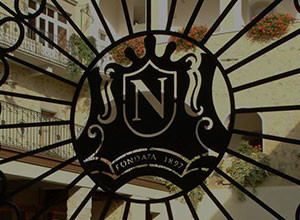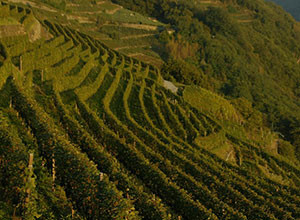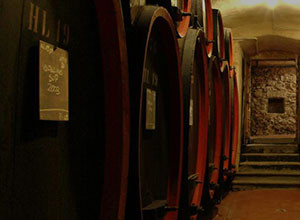The Ritz-Carlton Shanghai, Pudong

A legend because…
This rare style – produced by the same method that results in Amarone but infusing it with the finesse of the Nebbiolo grape – was first bottled by the Nino Negri winery in 1956. The wine is produced from healthy grapes that are dried for many months before vinification. The natural drying process elevates the alcohol and the dry extract, resulting in a wine of intensity and power. The 2001 vintage 5 Stelle, which is the winery’s top Sfursat, has long been considered one of the supreme expressions of the style.

The Nino Negri estate, based in the village of Chiuro, was founded in 1897 in the Valtellina valley on the southern edge of the Alps, and in 1986 it became part of the large Gruppo Italiano Vini company. For 40 years after his appointment as the estate’s oenologist, the wines were made by the revered Casimiro Maule. Negri’s holdings consist of more than 30ha, but it supplies most of its needs by purchasing fruit from more than 200 growers. Valtellina’s vineyards small plots of land run mostly by part-time growers, and in 1988 Nino Negri united its suppliers under its own grape producers’ association. The winery produces a wide range of wines of high quality, but the 5 Stelle is its most prized release.
There was a wet start to the 2001 vintage, with a snowy winter and warm rainy spring. A very hot and dry summer followed, which encouraged a positive vine development, ensuring high sugar levels and good aromatic qualities. September was dry too, but with cool nights that help retain good acidity. There was no pressure to pick early, and the grapes were harvested in fine condition on 6 October.
The 2013 vintage was also great, resulting a powerful and tannic wine.

Sfursat is not required to be a single-vineyard wine, and the grapes for the 2001 vintage came from outstanding sites within the sub-regions of Inferno and Grumello, and from a monopole vineyard called Fracia. The vines are planted on south-facing terraces at an altitude of up to 450m, on sand and silt soils. After harvest a severe selection took place, and only a quarter of the crop made its way into this wine.

The drying of the grapes was completed in late January, then the fruit vinified in stainless steel tanks with a maceration of 12 days. It was then aged 16 months in new barriques, specifically from the Allier and Nevers forests. (In contrast, the regular Sfursat is aged only in large casks.) After the barrels were blended, the wine was bottled, left to rest for five months, and then released in December 2003.
For the 2001 vintage, Daniele Cernilli wrote in 2014: ‘This is the best vintage… Bouquet is very complex, bottle- aged scents of tar, smoked wood and dried mushrooms together with those of spice and raspberries preserved in alcohol. The mouthfeel is full, rich and defined, velvety and intact tannins, excellent acidity and elegant body. Finish is very long and subtle.’
Stephen Brook first tasted it in its youth in 2004, noting its ‘sweet rich oaky nose of stewed tomato, dried plums and cherry pie’, while the palate was ‘very rich and concentrated, super-ripe and a touch candied’.
By 2018 the wine had developed ‘a complex nose of wet leaves, sour cherries, vanilla and sweet raisiny fruit. Still fresh and precise on the attack, concentrated and spicy but not discernibly hot, good acidity, and a long, elegant, piquant finish.’
Decanter's print publisher Amy Wislocki tasted the 2013 vintage at the Decanter Fine Wine Encounter in November 2017 and commented:'It's heady in character, deep and intense with black cherry fruit, cocoa and dried herbs. It's been aged for 20 months in new French oak, and at this young stage of its evolution the oak influence is still fairly pronounced, but all in balance. Concentrated yet fresh, it lingers on with a dark earthiness.'